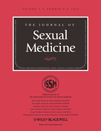IIEF-15: Unsuitable for Assessing Erectile Function of Young Men?
ABSTRACT
Introduction. The prevalence of erectile dysfunction (ED) is mainly studied in older males, whereas we measured prevalence of ED in young healthy males using a validated questionnaire.
Aim. Assessing the prevalence of ED in young adult men using the International Index of Erectile Function (IIEF-15) and creating a benchmark for ED in this young age group for further research.
Methods. Male students were randomly asked to participate. Men with history of sexual dysfunction or urologic disease were excluded. Age, having a relationship and the IIEF-15 were filled out anonymously and in private. Outcomes of all domains were separately analysed based on relationship and intercourse frequency.
Main Outcome Measures. ED measured by the IIEF-15.
Results. One hundred and fifty-one students, aged 21.8 years (17–35, SD 2.98) participated and 14 were excluded. Of 137 students, 81% reported to have an intimate relationship. ED appeared to be present in 46 students (33.6%). The answer “no sexual activity,” resulting in a 0-score, was given inconsistently. Outcomes were analysed for students who gave this answer at least once compared with those who never did. Nobody had ED in the group “without 0-scores” (n = 91). All students in the group “with (inconsistent) 0-scores” (n = 46) had ED. Students with a relationship had ED in 24.3% compared with 73.1% in those without a relationship (P < 0.001).
Conclusion. When men with inconsistently answered IIEF-15 questionnaires are excluded, a 0% prevalence of ED is found in this age-group. The current scoring method however does not state that these questionnaires should be excluded, and results in a prevalence of ED of 34%. Possibly, the scoring method of the IIEF-15 needs to be reviewed when this questionnaire is used in young, healthy men in order to accurately measure the prevalence of ED. Rynja S, Bosch R, Kok E, Wouters G, and de Kort L. IIEF-15: Unsuitable for assessing erectile function of young men? J Sex Med 2010;7:2825–2830.




